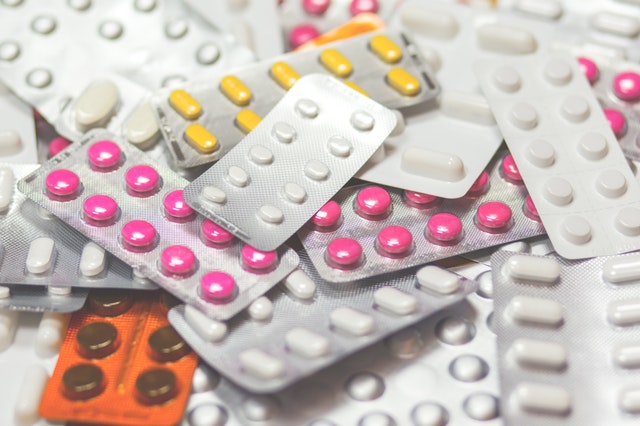First pill to prevent HIV is only for some patients

Physicians applaud the latest step in reducing new HIV cases, but insist that high-risk individuals who take the medication still need to practice safe sex.
After decades of health professionals trying to curb the number of new HIV cases in the U.S. each year, physicians have a new tool to help slow the spread of the illness in high-risk patients.
The antiretroviral medication Truvada was approved July 16 by the Food and Drug Administration for use in uninfected people to lower the risk of contracting HIV.
Doctors are encouraged to discuss the potential benefits and drawbacks of the medication with high-risk patients, which include gay and bisexual men who have multiple sexual partners, the Centers for Disease Control and Prevention said. Other potential candidates are uninfected people in a long-term relationship with a person who has HIV/AIDS and heterosexuals who regularly engage in risky sexual behavior, say physicians who specialize in HIV/AIDS care.
The CDC has not yet issued official guidelines on prescribing the pill for pre-exposure prophylaxis, but the agency is clear that the drug should be given to very specific types of patients and that it is not a substitute for safe sex practices.
“For some individuals at high risk for HIV infection, [pre-exposure prophylaxis] may represent a much-needed additional prevention method. But it will not be right for everyone, and it should never be seen as a first line of defense,” the CDC said.
Although many health professionals have applauded the FDA’s latest action, they are quick to note that the drug will not end the nation’s HIV/AIDS epidemic.
Physicians who specialize in caring for those with the illness encourage doctors to continue emphasizing the importance of safe sex.
“There will be ways that [Truvada] is helpful, but it’s not a major game-changer. It’s not a silver bullet,” said Laurie Dill, MD, medical director of the nonprofit Medical AIDS Outreach of Alabama.
“People [on this drug] still need to practice safe sex and protect themselves.”
Truvada is a combination of the anti-HIV drugs emtricitabine and tenofovir disoproxil fumarate in one pill, and it works by blocking the action of a protein that HIV needs to replicate in a person’s body, the FDA said. The pill is to be taken once a day.
This is the first drug approved to help prevent sexually transmitted HIV in those without the virus. The approach is called pre-exposure prophylaxis.
The medication is not new. Truvada originally was approved by the FDA in 2004 to be used in combination with other antiretroviral agents for treatment of people with HIV who are 12 and older.
Before deciding to prescribe the medication, physicians should discuss with patients why they might benefit from the drug and educate them on how to appropriately take it, said internist Harvey Makadon, MD, director of the National LGBT Health Education Center at Fenway Institute in Boston. The institute operates a community-based HIV research program.
“This isn’t something I would do easily,” Dr. Makadon said. Deciding to prescribe the medication would take “some thoughtful discussion with a patient.”
Tools for physicians
To ensure that doctors properly prescribe Truvada and clearly communicate to patients the importance of practicing safe sex while on the medication, the FDA worked with the drug’s manufacturer, Gilead Sciences, to develop a risk evaluation and mitigation strategy that includes a voluntary education program for health professionals who prescribe the drug.
The instruction includes a training guide on the proper use of Truvada and a safety brochure detailing potential drug side effects. Possible side effects include abdominal pain, diarrhea and nausea, as well as the less common complication of decreased bone mineral density, the FDA said.
A key requirement for prescribing Truvada is confirming that the individual is HIV-negative and retesting the patient at least once every three months, the FDA said. The agency recommends stopping treatment if the individual develops the virus in order to reduce the risk of the patient developing drug resistance to the antiviral.
“The hope is, that over time, [Truvada] will decrease the rate of new infections in the U.S.,” Dr. Hamburg said.
But some physicians question how effective the drug will be in the clinical setting, where doctors often have trouble getting patients to take medication every day. The drug’s efficacy is strongly correlated with drug adherence, the FDA said.
Complicating matters is that patients who could benefit from the medication might not be able to afford it, some doctors say. The daily pill and associated care will cost an estimated $11,000 a year, a portion of which may or may not be covered by health insurers, according to an article published online July 22 in Annals of Internal Medicine.
Some health professionals are concerned that patients prescribed Truvada will engage in riskier sexual behavior because they feel protected against HIV. To prevent such actions, Dr. Makadon encourages physicians to regularly talk to patients who are taking Truvada about their sexual behaviors.
Dr. Hamburg said there was no evidence of an increase in risky sexual behavior among participants in the two large clinical trials that demonstrated Truvada’s safety and efficacy.
She said the FDA is optimistic that approving Truvada for pre-exposure prophylaxis will help decrease the estimated 50,000 U.S. adults and adolescents who are diagnosed with the illness each year.
The FDA’s latest action was expected to be discussed at the International AIDS Conference held July 22 through 27 in Washington.
The World Health Organization on July 20 endorsed using anti-HIV medication for pre-exposure prophylaxis and encouraged interested countries to establish small projects to help public health workers better understand how such prevention efforts would work.
“We are committed to working with our public health service colleagues and the HIV/AIDS community … to make a real and lasting impact in our fight to prevent the spread of HIV,” Dr. Hamburg said.
Recent Posts
Organic Food Labelling In India| Certification, and Import of Organic Food in India

This Article is All About Organic Food Labelling In India and Certification, and Import of Organic Food in India. Explained in Detail About What is Organic Food labelling? Summary Short Description Wi..
Cosmetic Label Compliance India : A Guide to Compliance

Introduction Looking for Cosmetic Label Compliance India? Are you a cosmetic manufacturer or importer navigating the complex world of Indian regulations? Ensuring your product labels comply with the l..
Clinical Investigation Approvals: An Overview of Forms MD-22 and MD-23

Summary Short Description Strict regulatory protocols govern clinical investigations for medical devices. Central to this process are forms MD-22 and MD-23. Form MD-22 is an application to Central Lic..
HAVE A QUERY?
REACH US!Office
New Delhi
Unit No. 324 & 325, City Centre Mall, Plot No. 5, Sector 12, Dwarka, India - 110075
+917672005050
Bengaluru
RMZ Galleria, 1st floor, Ambedkar Colony, Yelahanka, Bengaluru, Karnataka, India – 560064
Call us on
Sales: +91 7672005050
Reception: +91-11-45214546
Timings
9 am to 6 pm (Monday to Friday)


